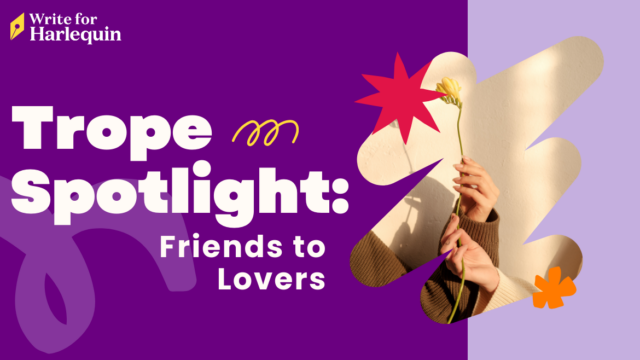If the clothes make the man, then characters make the story. If you don’t have fleshed-out, fully-realized, believable characters, you don’t have much of a book, no matter how earth-shatteringly great the prose may be. Just think of your favorite book from childhood or adolescence. Perhaps you were (still are) a great devourer of anything written by Jane Austen. What comes to mind when you think of the superb masterwork Pride and Prejudice? The characters that breathed life into its pages, of course: Elizabeth Bennett and her eternally drool-worthy beau, Mr. Fitzwilliam Darcy, and their memorable supporting cast. If Mr. Darcy isn’t the goliath of romantic icons, the very prototype against which all romantic heroes are judged, we don’t know who is. What a STUD—the swooning masses are forever indebted to you, Ms. Austen! Who you decide to people your novel will determine so much about your book. Its timeliness, its credibility, its likeability, relatability, etc., the list is never-ending. It’s a no-brainer, right? So when you sit down to craft the next great American romance novel, acknowledge and respect the importance of creating characters that the reader will want to return to again and again. With the right characters in place, the reader will follow your pen anywhere your mind can dream up.
Below is a guide to help you on your way:
Create characters that the reader hasn’t “met” before. For the reader to be reeled in from page 1, she has to care. And that just isn’t going to happen if you introduce her to characters that feel rehashed or regurgitated from somewhere else. Trust in your talent and creativity. An unexpected twist in characterization will go a long way in making the people in your book different. Which leads to the next point…
Avoid clichéd characters. Not only is it your duty to offer the reader unique characters, but hold back from giving her something you think she wants. Don’t be afraid to give your hero/ heroine flaws. In fact, don’t be afraid to torture them. Sure, they can be good looking, but give them a complex or two. Perhaps the heroine has struggled with an eating disorder in the past and is very insecure about her looks, or your hero has a disfiguring war injury that reminds him of the horrible turns life can take. Conversely, don’t fear putting in the unexpected when you create a villain. Give an editor a bad guy with greasy hair and bad breath and she’ll roll her eyes. Give yourself permission to push the envelope. But be mindful not to cross over into the category of the bizarre. Don’t alienate your intended audience. Stay within the parameters of the imprint for which you’d like to write. For example, a bloodthirsty demon hell-bent on revenge has no place in a Special Edition.
Relatability is key. Per the point above, write characters with your audience in mind. First, do your homework. Read (many!) books from the imprint you are targeting, and you’ll get a pretty good sense of what kinds of characters fly there. A surefire way to get a reader to put your book down is to give her a character in which she can’t see herself. A well-drawn character should have many facets: fears insecurities, self-doubts, internal conflict, appropriate emotional reactions, a source of pride—you get the picture. Just think about what runs through your own mind on any given day. Your characters deserve such complexity, too. Books should provide escapism, yes, but first the reader has to buy what you’re selling. The fantasy should be grounded in some kind of reality that the reader can relate to.
Create believable dialogue. Speaking of “keeping it real,” this is a biggie. There’s nothing that turns off a prospective reader or editor more that stilted, unnatural or—perhaps the biggest sin of all—dated dialogue. Voice betrays a character’s age. If your heroine is in her twenties, she should not be saying, “Gee, you are one lousy fellow. I am going to listen to my David Cassidy eight-track now, because he is way more far out and dreamy.“ You can write romances at any age, but if you’re older than the characters you are creating, talk to younger relatives and watch contemporary TV and movies to pick up cues on current lingo. (But please don’t overdo it—simple and straight forward dialogue is best!) Also very important: if you write dialogue for a child character, spend time with a child of a similar age to get vocal abilities and patterns down pat. No 1-year-old I’ve ever met speaks in complex, grammatically correct paragraphs (yes, we have seen this before).
Get feedback. Join writers groups and find a trusted critique partner. He or she will be your best friend when you can’t see the forest from the trees on those early drafts. Learn to take (constructive) criticism. Yes, this book is your baby, but if you want to share it with the world—and possibly profit from it—be open to making changes that will give your baby the best possible shot of making it in a flooded market.
Love your characters. And don’t be afraid to let one go if he or she isn’t working for you. When you lovingly create a character, warts and all, it shows. Invest the time and energy (and, oh, the agony!) and it will pay off. Be patient. The vast majority of literature’s greatest characters were not created in a day. Chances are, if you fall in love with your hero, the reader will, too. And that, dear writer, will be the ultimate gift.
Please consider these tips on characters when crafting your next Romance masterpiece. Happy writing—and good luck! Hope to meet your “people” soon!
–The SYTYCW Team from Advice from the Archives




